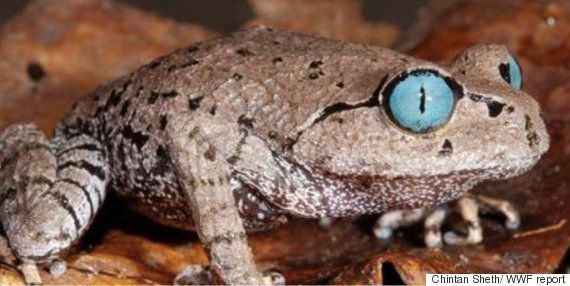
For fairy-tale lovers, WWF’s latest report, ‘Hidden Himalayas: Asia’s Wonderland’ might prove a veritable delight. According to the report that released on Monday (World Habitat Day), the Eastern Himalayas (Arunachal Pradesh, North Bengal, Assam, Sikkim, Bhutan, north Myanmar, and Nepal) are currently playing host to walking fish, sneezing monkeys, and unicorns (of a sort at least).
Experts claim that this region has always played host to a rich variety of flora and fauna, including Asia’s largest carnivore, the Bengal Tiger. In the last six years (between 2009 to 2014), 211 new species have been discovered, including 133 plants, 39 invertebrates, 26 fish, 10 amphibians, one reptile, one species of bird and a mammal.
Fifteen new species were discovered in Bhutan, and 60 in Nepal, giving the governments of both countries hope that there is incredible potential for more. “This is indeed an indication of how much there is still to be explored and found from our incredible region,” said Yeshey Dorji, Minister for Agriculture and Forests, Bhutan in his foreword.
The Nepalese Minister for Forests and Soil Conservation, Mahesh Acharya, expressed his concerns about climate change, and how they threatened the region. “We must recognize the importance of the Eastern Himalayas and continue to enhance monitoring of the Himalayan ecosystem, and equip ourselves with tools to adapt to the impacts of climate change. We must conserve our shared natural heritage,” he said in his foreword.
In 2010, scientists found an atypical monkey in Myanmar that features an upturned nose. Delightfully nicknamed ‘Snubby’, these monkeys are well-recognised by the locals of the region, particularly because they tend to sneeze during the rainy season, due to water trickling into their upturned noses. “To avoid this evolutionary inconvenience, snub-nosed monkeys spend rainy days sitting with their heads tucked between their knees,” says the report.
Another intriguing species that has been discovered in West Bengal is the vibrant blue ‘walking’ snakehead fish. Common in forest areas, these predatory fish lurk in the clear water of shallow streams, pools and swamps. This species of fish, according to the report, can survive on land for upto 4 days, and can writhe and wriggle its way on wet land. An aggressive species, they have been nicknamed 'Fishzila' by National Geographic.

'Walking' snakehead fish are air breathers, and can survive on land for 4 days
A ‘unicorn of sorts’ as the report put it has also been found in the invertebrate category, signalling the identification of an entirely new genus. Often underrated, the report claims that invertebrates are essential to the health of today’s ecosystems.

The millipede that is a 'unicorn of sorts'
Meanwhile in Arunachal Pradesh, a new species of frogs with what can only be described as unique, with hypnotic eyes has also made its presence: “Among the 27 species of Leptobrachium (the type of frog) there is a remarkable variety of eye colouration. In many species, the lower two-thirds of the eye is darkly coloured, while the upper third is a bright, contrasting colour, such as yellow, scarlet, blue or pale green,” according to a scientist in the report.

A blue-eyed frog has been discovered in Arunachal Pradesh
The new scientific unearthings also include a new shy bird species, Himalayan pitviper, a miniature dracula fish, and some ‘spectacular’ orchid discoveries in Assam and Nepal. The report also claims that “the impressive number of new species is greater than the total number of species discovered in Borneo (known for its ecologically rich offerings) over a similar period.”



Contact HuffPost India